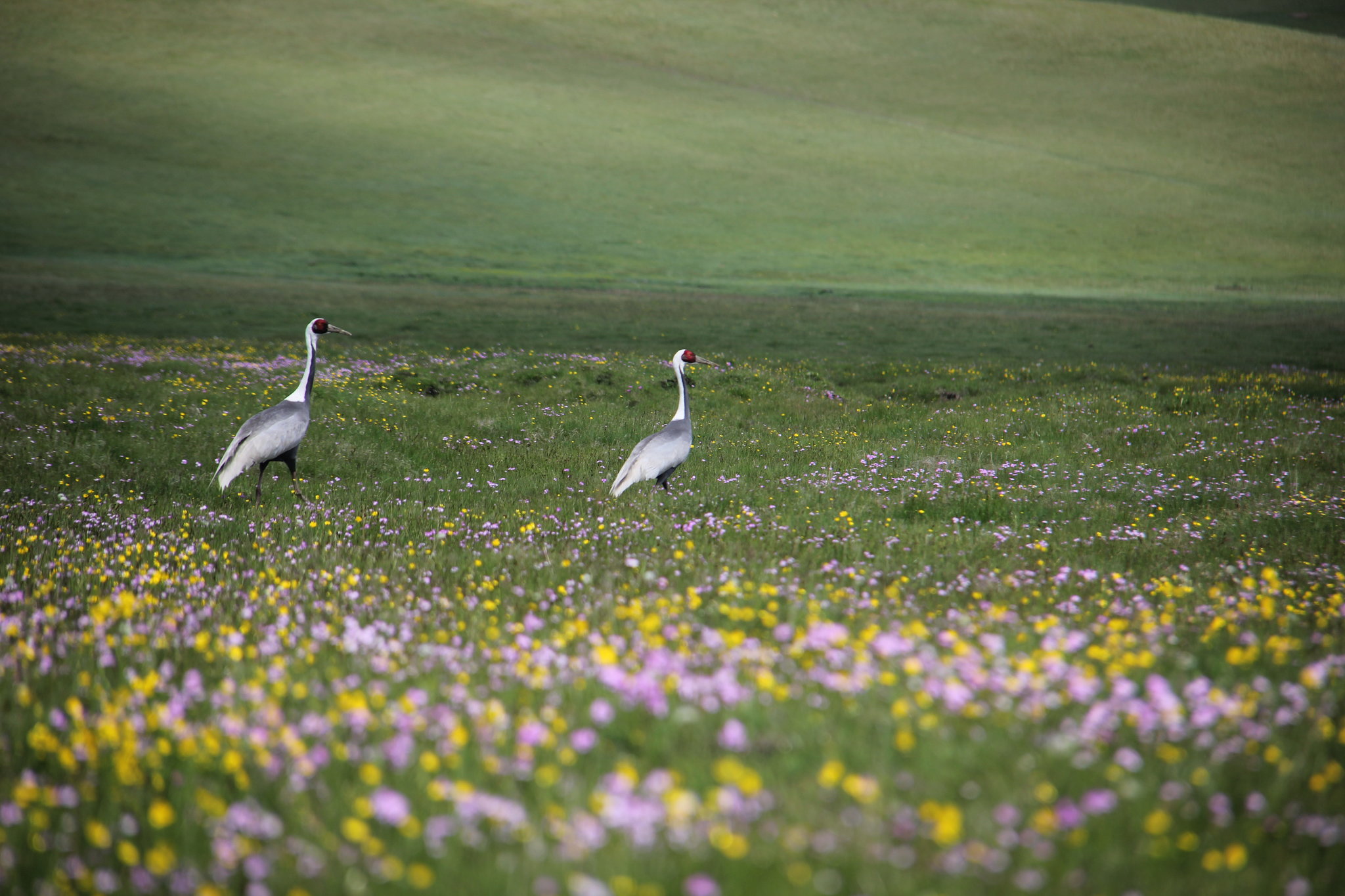Mongolia's contribution to save white-naped cranes in Asia
The Mongolian government has designated the Khurkh and Khuiten River Valleys as a national-level Nature Reserve. This new Nature Reserve will cover a 193,592-hectare area. The site is home to several species of cranes including the White-naped cranes.
Mongolia supports one of the most important breeding populations of the White-naped Cranes in East Asia. However, the species is threatened by significant long-term drought, climate change, predation, and disturbance from livestock grazing that affect their nesting success.
We are working in the Khurkh and Khuiten River Valleys in Mongolia on crane and wetland habitat research and conservation since 2013. The area is one of the most critical nesting areas for WNCs in East Asia that supports about 70 breeding pairs. Also the area is recognized internationally as a Ramsar Site, North East Asian Crane Network Site, Important Bird Area, and East Asia-Australasian Flyway Network Site.

With support from the US Forest Service, the International Crane Foundation, and many in-country partners, we have established a science and conservation partnership dedicated to the strengthening research capacity and guide management activities for the preservation of key wetland habitats in the Khurkh and Khuiten River Valleys. The partnership has identified that perched and ground water supported wetlands are critical nesting habitats for WNCs and should be given the highest conservation priority in the area. Also these wetlands are the main life support system for the herding and farming communities the area. Thus, we are working towards building a solid conservation program with a long-term vision focusing on wetland hydrology and crane conservation.
As a result of project activities from the last several years, the KKRV has been designated as a national-level Nature Reserve in Mongolia. This new Nature Reserve will cover a 193,592-hectare area. We further aim to secure these critical habitats by increasing local partner capacity to conduct research, community engagement, and conservation management activities with the support and technical assistance of the International Crane Foundation, US Forest Service and other partners. At the moment, we are working to develop a management plan for the protection and management of KKRVs.

We conducted numerous education and outreach activities for local herding families through non-technical, and field-based learning sessions. Mongolia’s large livestock herd size is increasingly degrading critical wetland habitats and disturbing nesting waterbird species. Our crane and wetland protection strategies hinge on buy-in from local herders, farmers, and governments. Therefore, the project has successfully engaged local herding families, but more effort is needed.

List of key project activities:
- Annual white-naped crane nest monitoring
- GPS tracking studies to identify migration routes and local movement and habitat use by cranes
- Annual crane color marking program to obtain data to better estimate the survival of the cranes
- Documentation of livestock disturbance and dog predation using nest cameras.
- Conduct habitat monitoring studies using vegetation exclosures, permafrost monitoring boreholes, climate change, and peatland research experimental plots.
- Wetland hydrology and surface water monitoring to produce fine resolution permafrost map to delineate the management zonation within the Nature Reserve.
- Surveys of aquatic and terrestrial insects as indicator of water quality and impacts of grazing.
- Annual capacity building workshops and training sessions.
- Host Annual Crane Festival in Binder
- Carry out educational and outreach activities to herding and farming communities.

